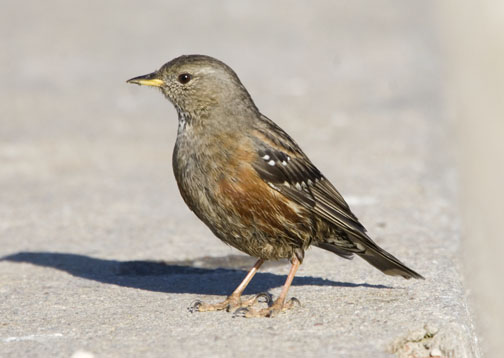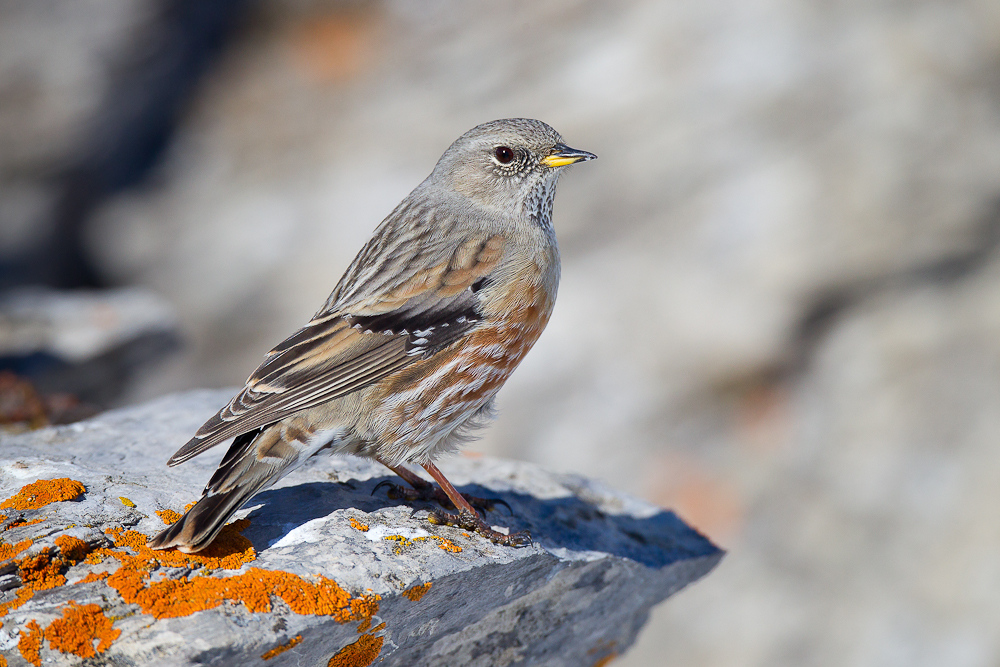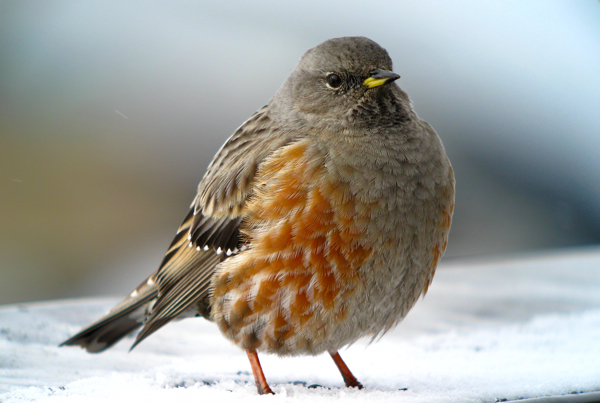
Prunella collaris
TAXONOMY
Prunella collaris Scopoli, 1769.
OTHER COMMON NAMES
French: Accenteur Alpin; German: Alpenbraunelle; Spanish:
Acentor Alpino.
PHYSICAL CHARACTERISTICS
Length is about 7.5 in (18 cm). A drab songbird, with a slender,
pointed beak and stout feet and legs. Upperparts are
brownish gray streaked with black and lighter colors; underparts
are more uniformly gray, with chestnut on the flanks.
DISTRIBUTION
A widespread species in the mountains of Europe and Asia.
Also has a minor presence in North Africa.
HABITAT
Inhabits high alpine meadows and rocky slopes above the treeline.
A short-distance migrant that breeds at high altitude and
winters in lower valleys.
BEHAVIOR
Possibly because of a lack of large predators and scarcity of
food at high altitude, the alpine accentor is rather unafraid to
approach humans for food. Its song is a high-pitched warbling,
sometimes given in flight.
FEEDING ECOLOGY AND DIET
Forages on the ground for insects, spiders, and other invertebrates.
Feeds on seeds and fruits during the winter.
REPRODUCTIVE BIOLOGY
Builds a cup-shaped nest of moss, grass stalks, and fine roots in
holes and rocky clefts on the ground. Lays a clutch of four to
five eggs. Because there are two clutches each year, the eggs
may be found from late May to July. Females display a complex
breeding
BEHAVIOR
, involving mating with several males in
succession. The polyandrous breeding system may benefit the
female by encouraging the tending of the nest and protection
of the young by one than one male.
CONSERVATION STATUS
Not threatened. A widespread and abundant species within its
HABITAT
.
SIGNIFICANCE TO HUMANS
None known.
Photo Gallery of - Alpine accentor




 Animalia Life
Animalia Life